Garden Jobs in June: Making the Most of the Summer Sun
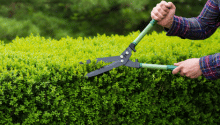
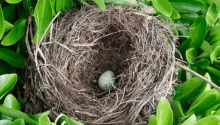
June marks the start of summer in the northern hemisphere. It is when the garden really comes into its own. Growth in June is vigorous, so watering and weeding becomes our primary tasks. By maintaining your garden now, you can avoid some pitfalls later in the year and keep your garden healthy and beautiful.
Make sure to take the time to enjoy your garden in June too. Getting to know your garden as a relaxing space can help you feel more connected with it and foster a better understanding of what your garden needs to thrive.
Contents
- Trees, hedges, and shrubs
- Flowers
- Garden maintenance
- Pests and diseases?
Top garden jobs to do in June
Pruning
June is in the middle of bird nesting season, so you must take care when pruning hedges, shrubs and trees. Make sure you check for nesting birds before pruning and if you see any signs of birds nesting, leave them well alone. You can prune once the nesting season is over. Learn more with our guide to bird nesting season here.
Pruning at this time of year controls the size, whereas pruning later in the year encourages more vigorous growth, making your plant taller and wider. Pruning early flowering shrubs and perennials in June can help them to thicken up, maintain a good shape and produce more flowers next year. This is particularly good if you have some unruly shrubs that are getting too large.
Clipping evergreen hedges in June can also help them maintain dense foliage and good structure. If you have crossing branches and overcrowding in shrubs, you can remove these now. Rhododendrons can be hard pruned once they have flowered, encouraging more flowers next year.
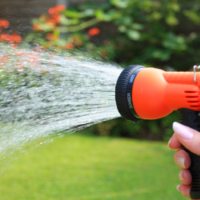
Watering
Watering can become one of the most time-consuming jobs in June. It’s a good idea to have rainwater collection and storage in your garden to save the cost of watering, be more environmentally friendly and safeguard against a potential hosepipe ban.
You can save water and time by watering deeply. Watering more but less often can help encourage deep-root growth in your plants. Watering in the morning, before the day starts to heat up, will also ensure that your plants have water when needed and reduce water loss through evaporation from the soil surface.
Ensure to give regular deep watering to newly planted trees and shrubs. Trees and large shrubs will need plenty of water in their first year to get them established, as will young trees and shrubs. If you see a plant beginning to wilt, water at any time of the day as soon as possible.
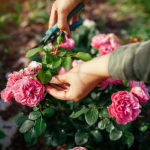
Deadhead plants to encourage flowering
Most flowering plants will produce more flowers if they are regularly deadheaded. This is because once flowers start to set seeds, they concentrate their energy on making them. They will no longer be focussing their energy on creating more flowers. We can prevent this by deadheading regularly.
Pruning roses can help them not to get too large and maintain a good shape. In addition, deadheading roses throughout spring and summer will help to keep blooms going and support healthy growth.
Stake tall perennials and tie-in climbers
Some plants will need some extra support during the summer. Tall perennials should be staked to ensure they don’t snap in the wind or under the weight of their blooms. Climbers and ramblers should also be tied in to ensure that they don’t snap and continue to grow where they are meant to be. Growth is often vigorous during June, so this might need to be done several times.
Fertilise and mulch perennials, shrubs and roses
Mulching in the summer with a soil improver or compost can help feed your plants naturally and retain water. Mulching with bark or other hard mulches will help to suppress weeds, retain moisture and create tidy-looking borders.
Fertilising in June can help to support healthy growth and more blooms, particularly with establishing plants, annuals and plants in containers. However, be careful not to over-fertilise, as this can create weaker growth and, in extreme cases, cause fertiliser burn.
Flowers
Plant flower bulbs
A few bulbs can be planted in June, but most will now be planted "in the green". This means they will already have foliage and, in some cases, flowers. This is a good way to add immediate impact to your garden, but it is less cost-effective than buying dormant bulbs. Here are some bulbs that you can plant in June:
| Bulb Variety | Description & Planting Advice | Plant Image |
|---|---|---|
| Crocosmia | Crocosmia are flowering perennials that come in shades of red through to yellow. They have attractive flowers and foliage and will come back stronger and larger every year. They prefer growing in clumps, so plant several bulbs together where possible. | 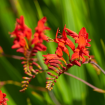 |
| Dahlias | Dahlias are a brilliant cut flower, easy to grow from seed and from corms. They produce a wide variety of flowers to suit every taste and colour scheme. Plant corms in early June and make sure that they are well-watered with good drainage. | 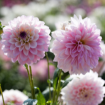 |
| Gladiolus | Gladiolus produce tall stems of striking flowers in many different colours.They can be planted in June for a spectacular display in late summer. | 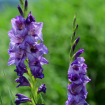 |
| Hostas | Hostas will be 'in the green' in June but make a fabulous addition to the garden. They are also easier to establish if planted in the green. Ensure they are planted somewhere with partial to full shade, in rich and moist soils. | 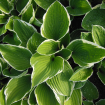 |
Sow Perennials
Perennials are fantastic value and come in many shapes and sizes. They will die back in winter and come back again in spring. Some of them are surprisingly easy to grow from seed too. Here are some lovely perennials to try growing from seed this June:
| Perennial Variety | Description & Planting Advice | Plant Image |
|---|---|---|
| Achillea | Sow seeds in June for flowers next year. Achillea, also known as Yarrow, comes in many different colours and produces a profusion of small, brightly-coloured flowers in an umbrella shape. Achillea is a popular choice for bees in the garden and will grow easily. Sprinkle seeds into a tray of freely-draining compost and cover with a fine layer of compost or vermiculite. | 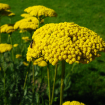 |
| Aquilegia | You can direct sow Aquilegia inot the garden in June. Aquilegia is an easy to grow perennial that produces pretty flowers and foliage. It’s very easy to maintain and an excellent choice for adding colour and height to garden beds. | 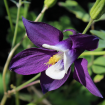 |
| Echinacea | Sow from June to August for flowering next summer. Echinacea or coneflowers are brilliant for insects, edible and attractive. They’re easy to grow from seed when planted in June. Sow in a seed tray and cover lightly with compost. Ensure good drainage and keep moist until germination. Plant them out in autumn or spring. | 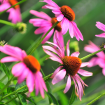 |
| Helenium | Direct sow in a seed bed from June to July for flowering in autumn. Heleniums come in a variety of yellow, ochre and red tones and are excellent for adding colour and interest during the late summer and autumn. | 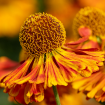 |
| Wallflower | Sow in June for planting out in autumn or the following spring. English Wallflowers are beautiful and early flowering, so great for impact early in the year. Sow direct into the garden or in seed trays for planting out in autumn. | 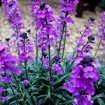 |
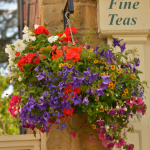
Plant hanging baskets
Hanging baskets are a great way of adding colour to your garden, porch, and walls. June is the perfect time to plant them up. Ensure to use a compost that retains moisture well. You can add moisture-retaining granules to your compost to help too.
Use plants that won't mind drying out between watering, such as Petunias, Calibrachoa, Begonia, Pansy and Fuchsia. Even with the best of intentions, hanging baskets can still dry out.
Sow bedding plants
June is a good time to sow some bedding plants. Late summer flowering, bedding plants, and bedding for the following spring or winter can be sown now and will save you money and fill your garden with flowers.
Here are some bedding plants you can sow in June:
| Bedding Plant Variety | Description & Planting Advice | Plant Image |
|---|---|---|
| Campanula | Campanula or bell flowers are a beautiful biennial that can be sown now for blooms in summer and autumn next year. Sow into well-drained compost in seed trays on a windowsill or in a greenhouse. Press the seeds lightly into the compost and do not cover. Plant out in late summer or early autumn. | 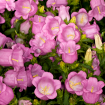 |
| Nasturtiums | Nasturtiums are fast-growing annuals with a profusion of large leaves and bright-coloured flowers. They are great as companion plants and easy to grow. Sow directly into your garden in June and water well | 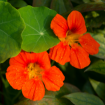 |
| Nigella | Nigella, or love-in-the-mist, is a beautiful and delicate annual plant with interesting seed pods. Sow directly into your garden, covering with a fine layer of compost. | 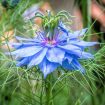 |
| Pansies | Pansies are a garden favourite, coming in many different colours and patterns. They can be sown indoors or outdoors into seed beds now for flowering in autumn. | 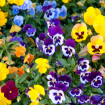 |
| Sweet William | Sweet William is a beautiful and fragrant biennial with large flower heads that create a massive impact in the garden. They are also excellent cut flowers. Sow indoors in a seed tray, covering lightly with compost and prick out once the plants are big enough to handle. They can be planted in the garden in late summer or early autumn for flowering the following spring. | 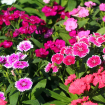 |
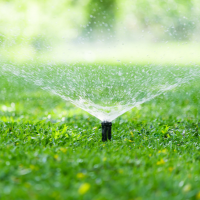
Garden maintenance
Look after your lawn
Mow your lawn once or twice a week through the summer whilst growth is vigorous to ensure thick and healthy coverage. Do not over-cut, particularly when dry, as this may cause damage or disease. Maintaining sharp mower blades will also help to reduce damage to your grass from mowing.
Your lawn may need extra water during the summer months. If you are looking after fresh turf, you must water regularly to ensure it gets established.
If you have furniture on your grass, regularly rotate it to a differenjt spot to reduce damage and allow the grass underneath to recover.
For more information on caring for grass in the summer, take a read of our guide to keeping your lawn looking perfect.
Keep on top of weeds
Weeds will grow quickly during the summer and set seeds fast. Stay on top of weeding to prevent them from setting seeds for later in the season and next year. Using a small hand hoe between plants is an effective and fast way to eliminate weeds in borders. Using a bark mulch will also help to suppress weeds and retain water in your garden beds. Using a weed membrane is a good idea if you have bare areas; this will temporarily maintain your soil's health and stop weeds from proliferating.
Persistent, perennial weeds such as bindweed, ground elder and mare’s tail should be pulled or hoed regularly. This will prevent them from being able to photosynthesise and gradually knock them back until they no longer return.
Weed killers should be avoided as they bind metals in the soil, making them unavailable to plants. Metals such as copper, zinc and iron are essential for healthy plant growth. Unfortunately, even topical weed killers can also be a serious problem for your garden wildlife.

Pests and diseases
Pests and diseases are an inevitability in gardens. We should accept that our gardens are part of an ecosystem, and they will be subject to some pests and diseases. However, the extent of these can become intolerable from time to time, and we need to stand in.
Lawn rust disease
Lawn rust disease can occur any time from June to late autumn. It’s not hugely problematic and will not damage your lawn, but it can look unsightly. Regular fertilising through summer will help maintain vigorous growth and help your grass fight rust. Mowing your lawn will remove affected leaves and keep the lawn looking healthy. Avoid nitrogen-based fertilisers in autumn as this may produce growth that is more susceptible to rust.
Leatherjackets
Leatherjackets, or cutworms, are the caterpillars of several species of moths and butterflies. They can be problematic in lawns, creating patches. They feed on the roots of grass plants and create a patchy-looking lawn. These are particularly prevalent in new-build gardens with poor topsoils.
On smaller lawns, the best way to get rid of leather jackets is to soak the lawn thoroughly with water and then cover it with a weed membrane or tarpaulin. In the morning, you can collect them as they will have come to the surface. They can be difficult to spot, so you will need to get down on your hands and knees for this job!
You may also want to try an application of nematodes. Whilst this is not hugely effective, it can help reduce numbers and give your lawn a chance. An annual application of soil improver in spring can help reduce leatherjackets, too, by bolstering the soil ecosystem and ensuring more of their natural predators live in the soil.
Hellebore Leaf Spot
Hellebore leaf spot is a common fungal infection that affects hellebore plants causing brown dead patches on leaves, stems and flowers.
You can help prevent this by maintaining a healthy environment around your plants, staying on top of weeds and ensuring good airflow around your hellebores.
Affected areas should be removed immediately to stop it spreading, and make sure to dispose of the affected materials. Fungal infections are spread by tiny air-borne spores, so always dispose of affected materials away from the plant, somewhere the spores cant spread.
Slugs and snails
Slugs and snails can be a problem in June, particularly after rainfall. The best way of reducing slug and snail damage to your plants is through garden maintenance. Old leaves dragging on the ground, dead plant matter on the soil's surface and unruly lawns will all provide good ground cover for slugs and snails. If you remove old plant matter and dying leaves, the slugs and snails will find it more difficult to get onto your plants.
If you have raised beds, slugs and snails may hide in the corners and edges. Regular applications of nematodes can help, but it is costly, and slug pellets should be avoided at all costs as these (even the organic ones) kill hedgehogs and birds in the garden that help us control slug and snail populations. Beer traps buried into your garden beds can help catch slugs and snails, and you can make them yourselves cheaply, but they will need to be maintained regularly.
Slugs and snails have a homing instinct that works over roughly 20 metres. So if you have a rainy day, go out in the evening, and the slugs and snails will be out in numbers. You can collect them (we recommend wearing thin gloves) and translocate them to somewhere over 20m away.
Blackspot
Blackspot is another fungal infection commonly affecting roses. Unfortunately, despite numerous products claiming to treat it, there is no cure for blackspot. These may stop the spread but will not kill it.
To avoid getting blackspot, maintain the health of your plants by pruning and ensuring good airflow around the leaves and stems. Affected areas of your plants should be removed and disposed of immediately to prevent further spread.
In most cases, blackspot will not damage your plant; it is just unsightly.
Viburnum beetle grubs
Viburnum leaf beetles cause damage to the leaves of viburnum plants, resulting in a lace effect with lots of holes. This can be very unsightly and weaken our plants.
Checking plants regularly and removing the grubs will help to reduce damage. Viburnum opulus and Viburnum tinus are most likely to be affected, so if you have either of these species, pay close attention.
The grubs are around pale yellow with black markings and grow up to 8mm long. They will feed on the leaf but not the veins, so if you notice this kind of damage, it could be Viburnum beetle grubs. Check the undersides of the leaves, as this is typically where they are found.
Growing brassicas and umbellifers that flower in early spring will help to increase the populations of tiny predatory wasps that will attack these grubs and keep their populations to a minimum. Feeding birds and creating habitats for birds will also help, as some birds will feed on these kinds of grub and remove them for you.
Box blight
Box blight is another fungal infection that causes large parts of your box plant to die off. Box blight can be terminal, so it is best avoided at all costs. It usually occurs in autumn, but correct maintenance during the summer can reduce the chances of getting it later in the season.
To avoid box blight, only prune during dry weather, and try to water your box plants at the base to avoid water sitting on the foliage. Growing them in well-drained soils with good ventilation around the plants will also help to reduce the chances of getting infected.
If you see box blight, remove the affected materials immediately and feed your plant with a general-purpose fertiliser.
It is a joy to watch our gardens flourish as we come into summer. With regular maintenance now, you will be able to help your garden through the summer and autumn months, reduce pests and diseases and keep a beautiful, healthy space. Don’t forget to check out our garden jobs for July blog.
 Hedges Direct
Hedges Direct 



